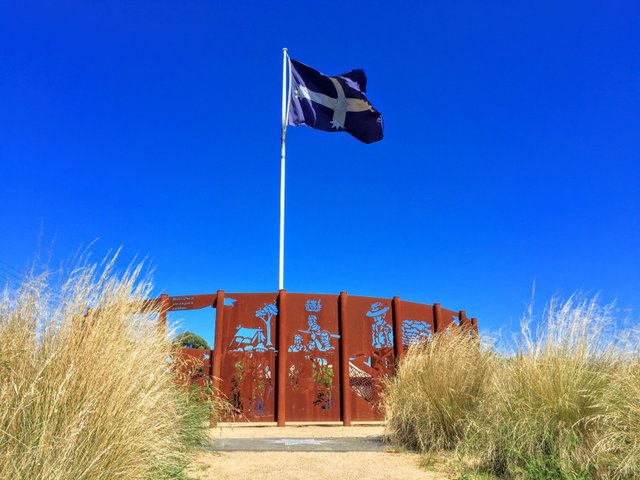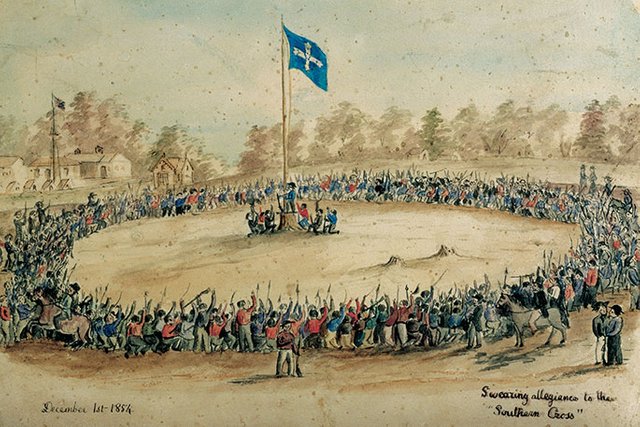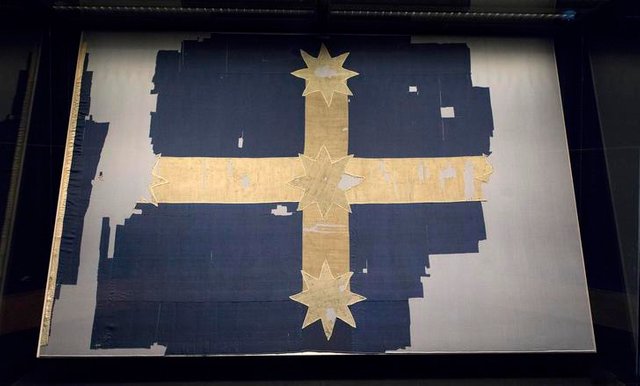Birthplace of democracy
Aussies are a reasonably well-behaved bunch, mostly. There’s no populace-uprisings, no overthrowing the government, although a few (millions) of us have probably wanted to, and we’re not a particularly warlike people.

Southern Cross flag flying over a monument placed at the Eureka Stockade site in Ballarat, Victoria.
We get upset about things though: When the corner store runs out of our favourite pie Villi’s Goulash pie for me...Just for the record, the power goes out and the TV shuts off during the football or State of Origin and maybe when someone eats the last of the Fruchocs. (That's a South Australian thing).
Maybe that’s a slight exaggeration, or trivialisation, of what riles us up but overall we’re a pretty passive, fun loving bunch. Having said that, there was a time in our history when we rose up to stake our claim and revolt against our oppressors, the bloody British.
December 3, 1854 was the day and Ballarat, Victoria was the place.
Ballarat was essentially a huge gold mine. Thousands of people worked the goldfields over individual claims, around 150,000, miners and families from British immigrants, Americans, French, Italians, Polish, Hungarians and Germans and about 40,000 Chinese as well. Talk about Australia being multi-cultural huh? Seems it’s in our DNA!
In 1854 Australia was a British colony and subject to her rule and governance. And there, my friends, was the issue.
The government needed a way to tax the miners so came up with Miners Licenses. It was a simple way to tax the miners whether their claim was successful or not. A good scam for the Government, not so good for those miners whose claims were not as successful as their peers.
Times were tough and people began to struggle to pay for their license. Inevitably there was strife.
In November 1854 a license-burning was organised and a flag was unveiled, the Southern Cross which was known as the Eureka Flag at the time.
I have had the privilege to have seen the actual flag, the original one, displayed at Eureka Stockade in Ballarat which has been lovingly preserved. (That preservation is an interesting story in itself.)
The Southern Cross has become an iconic symbol in Australia all these years later but at the time it was not well-received by the Government and neither was the burning of licenses.
A group of miners marched over to the Eureka diggings after another license burning had occurred and encircled about an acre-sized area using wood, planks, trees and pretty much anything they could find to barricade the area. It was henceforth known as the Stockade.
Eureka Stockade was manned by about 500 men who had also begun to gather guns and forged pikes to defend the Stockade against the government troops whom they knew would move to quell the civil unrest.

Early morning December 3 found the Stockade under attack by the 12th and 40th regiment in support of the Police Troopers. src
A pitched battle ensued and in a scant 20 minutes 22 diggers and 5 troops were killed. The victor? The Government. The flag was retained a a souvenir (fortunately) and martial law was imposed.
Trials were held but all thirteen of the diggers were acquitted. All of the demands of the diggers were met and the rest, as they say, is history.

The actual flag as preserved and displayed in Ballarat. It is quite large at 2.6m × 4m (8.5' × 13.1')
Obviously the above is not a full historical account however I wanted to offer a taste of it and urge travellers from abroad, and Australian’s, to visit Ballarat to learn some more about the beginnings of the Australian democracy.
Some say it was the birthplace of Australian Democracy and maybe it was. What is certain though, is that the Southern Cross has been adopted as a symbol of protest by various groups and a source of great pride by others here in Australia.
A visit to Ballarat (about 90 minutes from Melbourne) will not disappoint. You can learn more about Ballarat here. There is an excellent museum and visitor centre at the site of the Eureka Stockade including a cafe. Ballarat is an excellent place to spend a couple days immersing oneself in the gold mining history of the region.